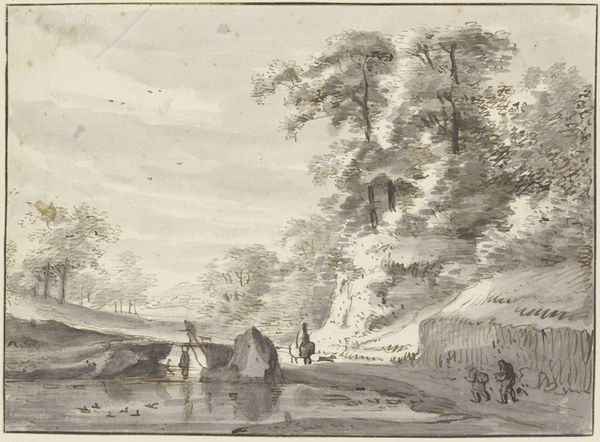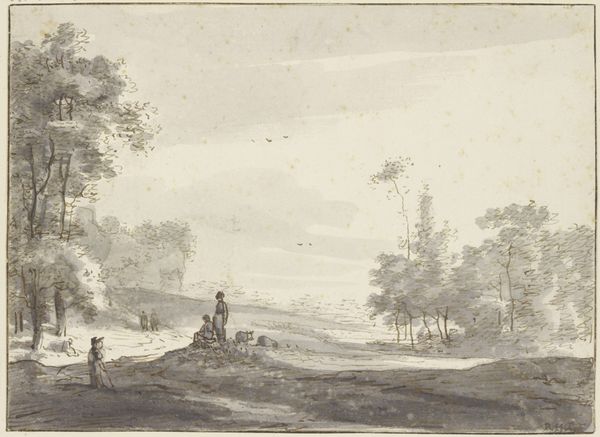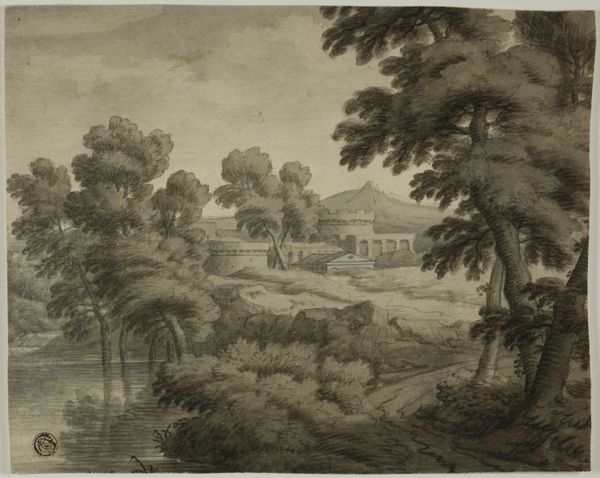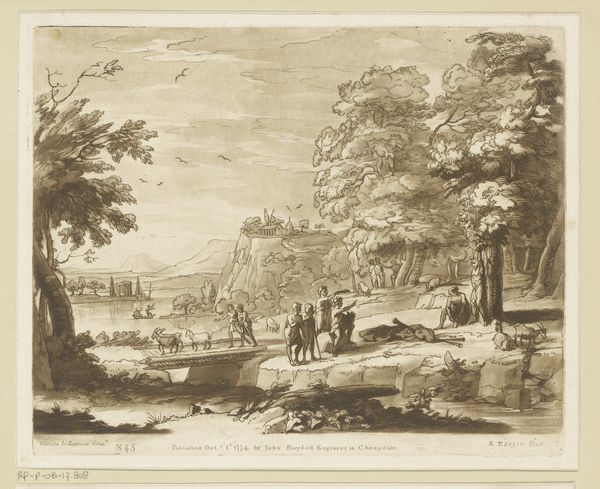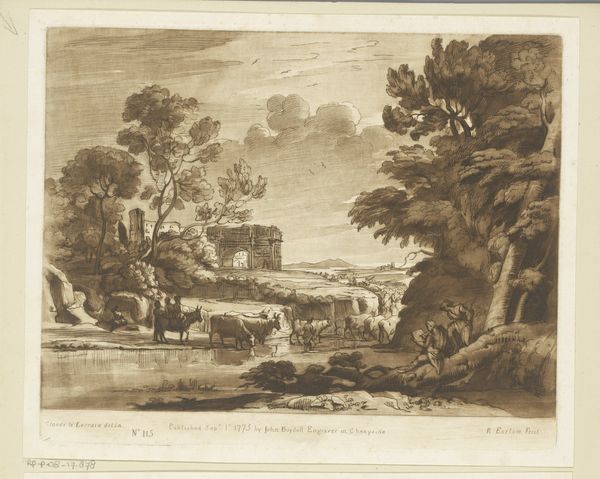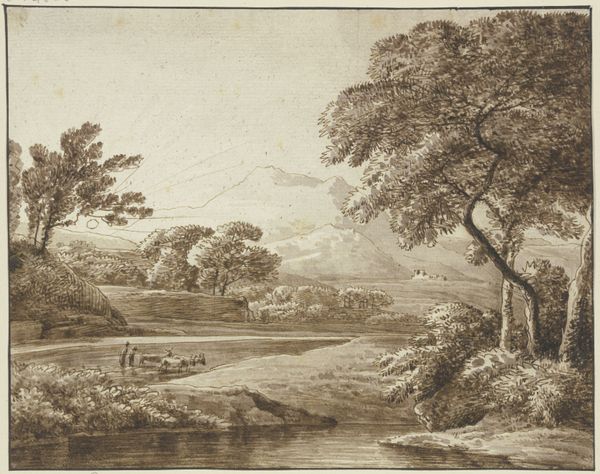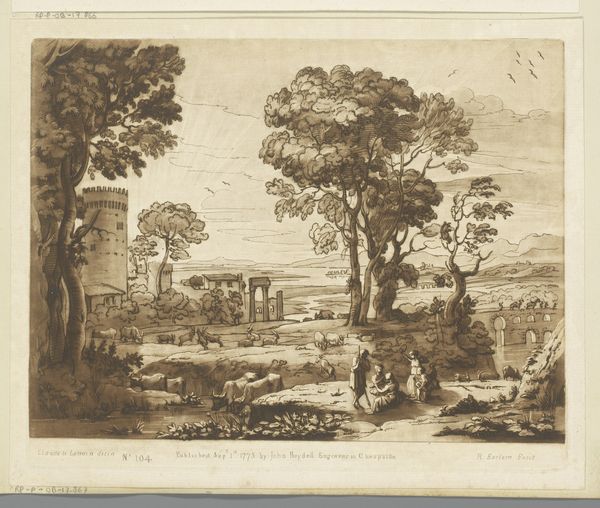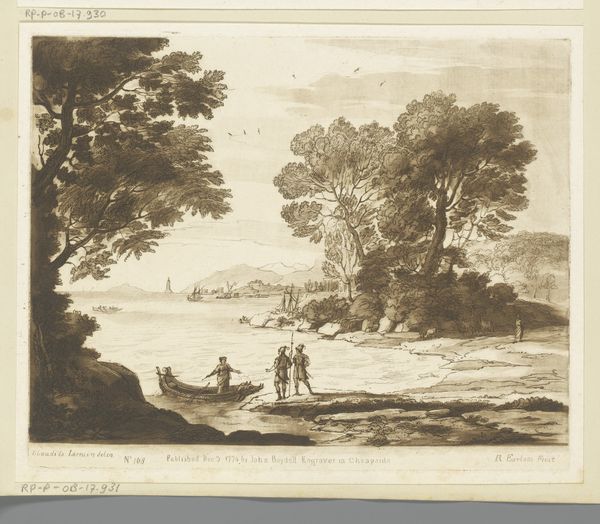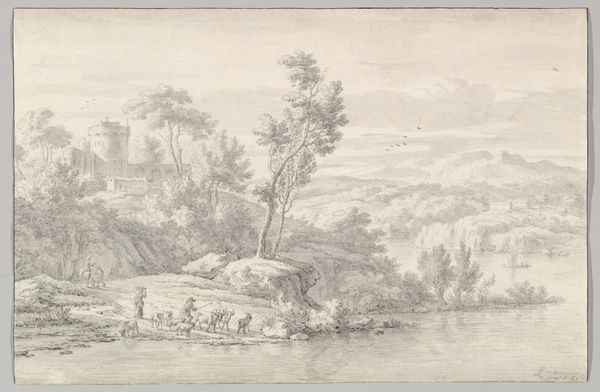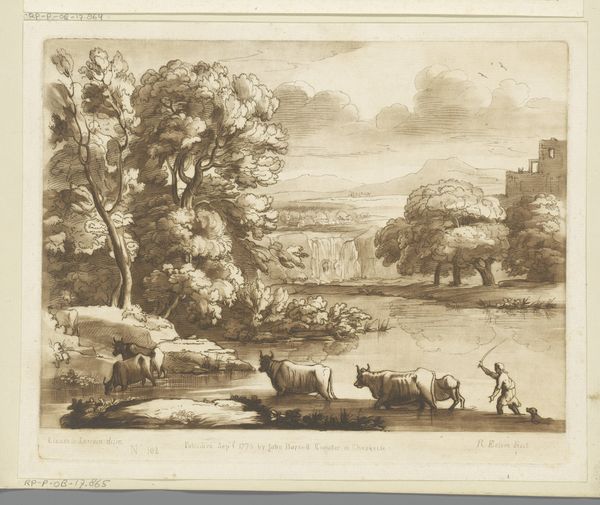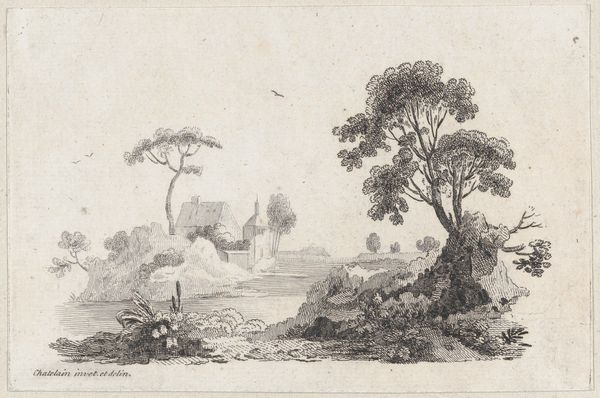
drawing, ink, chalk, graphite, pastel
#
drawing
#
baroque
#
landscape
#
ink
#
chalk
#
graphite
#
14_17th-century
#
pastel
#
watercolor
Copyright: Public Domain
Curator: Welcome to the Städel Museum. We’re standing before a delicate drawing titled “Landschaft mit Bach und Brücke, im Wasser Badende”—Landscape with Stream and Bridge, Bathers in the Water—by Roelant Roghman. It's rendered in graphite, ink, and chalk. Editor: Immediately, I'm struck by the drawing’s almost ghostly quality. The monochrome palette lends it a quiet, contemplative air. It’s deceptively simple in its composition, yet there’s an undeniable beauty in its understated moodiness. Curator: Indeed. Roghman masterfully employs line and wash to create depth and texture. Notice how the trees are rendered with fine, calligraphic strokes, contrasting with the broader, softer washes that define the sky and distant hills. This use of contrasting marks guides our eye through the composition. Editor: I find myself drawn to the figures in the water. Who were they, and what was their relationship to the landscape? Was this an innocent scene of rural leisure, or something more complicated? Perhaps they used that river to wash their garments or find solace? Curator: From a formal perspective, the bridge serves as a strong horizontal element, dividing the composition and providing a visual anchor. Note how Roghman uses the bridge to create a sense of perspective. Editor: Perspective is intriguing here because while technically proficient, it also reveals tensions of class in leisure—a figure stands on the bridge overlooking a lower-class community that is either carefree or burdened with a job as they clean garments and/or bathe themselves in a rather suspicious-looking pond. Are they really relaxed? And I'm curious to understand how bodies might relate to environmental concerns as a reflection on class and gender. What waste, chemicals, bacteria might they endure or release into the river? Curator: It prompts us to reflect on how our perception is mediated by artifice and structure. The arrangement invites introspection regarding man’s interaction with nature. It has Baroque qualities and reminds one of a scene along the Dutch waterways. Editor: Roghman's rendering opens pathways of historical narrative, personal reflection, and socio-economic tensions in our human-environmental relations. It seems innocent but the drawing evokes potent thoughts about class, water, health, labor, and relaxation. Curator: Absolutely. Roghman's talent extends past pictorial elegance to generate subtle reflection. I trust you have appreciated this brief exploration of Roghman's remarkable scene!
Comments
No comments
Be the first to comment and join the conversation on the ultimate creative platform.
